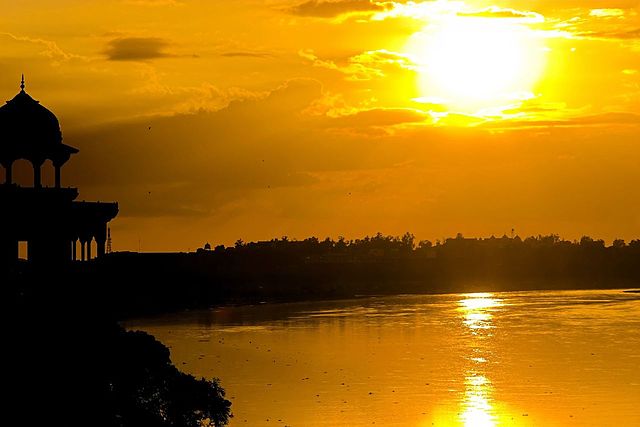Where Is Haryana?
Haryana, one of India’s 29 states was established on November 1, 1966. Haryana, spanning an area of about 44,212 square km, is the 21st biggest state in India. The state houses a population of 25,353,081 residents. Haryana is located in North India and is bordered by the Indian states of Rajasthan to the west and south, and Himachal Pradesh and Punjab to the north. On the eastern side of Haryana, the Yamuna River defines its boundary with the Uttar Pradesh state of India. Haryana also borders the Indian capital Delhi on the southern, western, and northern sides of the capital city. Some parts of Haryana are thus included in the National Capital Region to achieve developmental goals.
Climate Of Haryana
Haryana experiences a continental type of climate with extremely hot summers and mild to chilly winters. Summer temperatures can soar as high as 45 °C. May and June are hottest months and December and January are the coldest months. Haryana has an arid to semi-arid climate with average annual rainfall of 354.5 mm. July to September months receives the maximum amount of rainfall and December to February also receives mild showers.
Topology Of Haryana
Haryana is a landlocked state that stretches between the latitudes 27°39' and 30°35' N, and longitudes 74°28' and 77°36' E. The state’s boundaries include an area of 4.42 m ha, roughly 1.4% of India’s geographical area. Haryana has an altitude variation between 700 and 3600 feet. The four main topographical features of Haryana include:
The northeastern Shivalik Hills
The southern Aravali Range
The southwestern semi-desert sandy plain
The Yamuna-Ghaggar plain
Hydrology Of Haryana
The Yamuna and the Ghaggar River are the two main rivers of Haryana. The Yamuna flows along the eastern boundary of the state. The Ghaggar enters Haryana near Pinjore and after passing through Ambala and Sirsa, enters Rajasthan. The Tangri and the Chautang are the important tributaries of the Ghaggar River. Another important river, the seasonal Markanda River originated in the Shivalik Hills and enters Haryana near Ambala. The river has a devastating impact during the monsoons when it swells into a notorious torrent.
Soils Of Haryana
Haryana has deep and fertile soil in most parts of the state with few exceptions. The eroded lands in the hilly northeastern sections of the state and the southwestern semi-desert sandy plains have poor quality soil. The land is arable in most parts of the state but demands extensive irrigation.
State Symbols Of Haryana
State Mammal: Black Buck
State Bird: Black Francolin
State Tree: Peepal
State Flower: Lotus
Protected Areas In Haryana
According to the India State of Forest Report, 2013, Haryana has a forest cover of 1586 square km that roughly covers 3.59% of the geographical area of the state. The tree cover of Haryana is about 1282 square km, roughly 2.90% of the state.
National Parks Of Haryana Conservation Areas Of Haryana

Wildlife Sanctuaries In Haryana
Breeding Centers In Haryana
Flora And Fauna Of Haryana
The state of Haryana features dry, thorny, deciduous forests and thorny shrublands. During the monsoon season, the hilly areas in the state are covered by a carpet of grass. Trees growing here include eucalyptus, mulberry, pine, shisham, babul, kikar, and others. Eucalyptus trees are planted on the wastelands and along the highways of the state. Shisham (Dalbergia sissoo) trees are found to grow in the northern parts of Haryana. Here, these trees grow along roads and canals. The southwestern semi-arid land features spiny kikar (Acacia arabica) trees and shrub.
The notable fauna of Haryana includes the black buck, nilgai, and panther. Wild dog, jackal, mongoose, and fox also live here. Over 450 species of birds can be observed in this northern state of the country. Pigeons, dovers, parakeets, sunbirds, kingfishers, bulbuls are some of the birds found in and around the agricultural lands of Haryana. Ducks, teals, and other water birds are found near the water bodies. Non-venomous snakes like rat snakes, boas, and python as well venomous species like kraits and vipers are also found in Haryana. Lizards, tortoises, and frogs also live here.












No comments:
Post a Comment